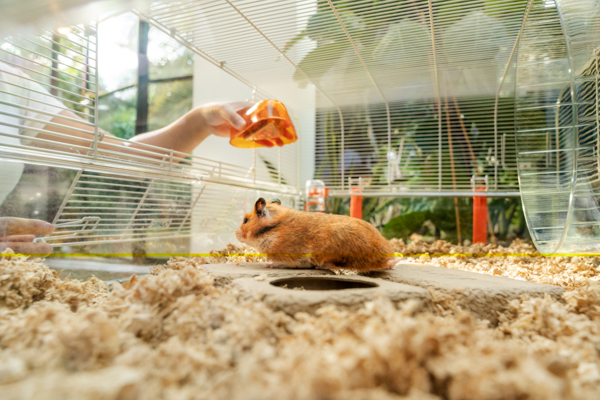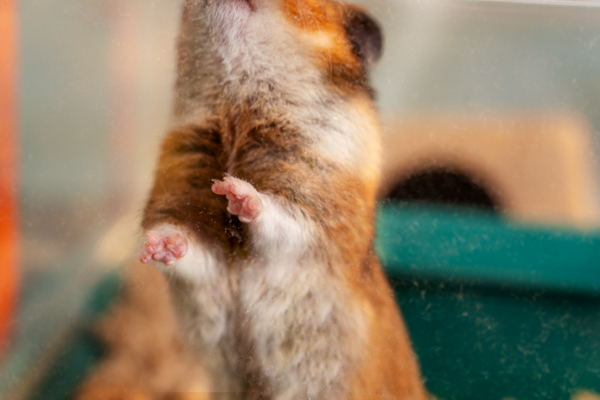Hamsters are members of the rodent family, related to mice, rats, gerbils, and even guinea pigs. But hamster anatomy differs from their cousins in various ways. Their compact size fits perfectly in the palm of your hand, but hamsters have big personalities in their pint-sized forms. Discover the bodies behind these animated animals — all the ins and outs of their appearance, plus determining their gender, breeding, and pregnancy— here is all you need to know about hamster anatomy.
General appearance
Being members of the rodent family, hamsters share some characteristics with their cousins. Beady eyes, hand-like feet, and whiskers are all rodent-like features. But aside from these similarities, hamsters have anatomical features unique to their species.
Hamsters are small animals, ranging from 7 inches long for the Syrian hamster, to a mere 2 inches for dwarf varieties. They weigh anywhere between 1-5 ounces, and come in a variety of coat colors and length. Their thick, compact bodies make them agile and athletic, able to dig, climb, jump, and squeeze through narrow openings.
All hamsters have small, rounded ears on the top of their heads. Their tails are so short that they are barely noticeable, and they have cheek pouches that extend to nearly their hips that they use to carry food and bedding to their burrows. These cheek pouches are famous features of hamsters, distinguishing them from most other rodents. Cheek pouches are only found in varieties of ground squirrels, like chipmunks, prairie dogs, and marmots.

Feeding your hamster a balanced diet is essential to keeping them healthy
Inner workings
Ever wonder what goes on inside of the busy body of a hamster? A hamster’s fast metabolism is supported by a robust system. Here’s a look at what goes on inside of your hamster on a daily basis.
Digestion
Like other mammals, digestion for hamsters begins in the mouth. They use their long, ever-growing incisors to take bites of their food, and grind the food down with their molars. Hamsters are also able to keep food intact and dry inside of their pouches throughout this entire process.
Interestingly, hamsters have 2 stomachs. The forestomach is the first stop that your hamster’s food makes, where it is stored briefly to become moist. Once the food has become moistened in the forestomach, it moves on to the second stomach, called the glandular stomach. This is where digestion really gets underway.
Metabolism
Your hamster is extremely efficient at converting food into energy. That’s why it’s so important to feed your hamster the right diet to help fuel their active bodies. But, because they need regular food intake, they are prone to hoarding food in their burrows to replenish their energy stores. This is why you’ll see your hamster happily stuffing their cheeks with leftovers to enjoy later.
Give your hamster free access to quality pellets to fuel their fast metabolisms without causing them to pack on extra pounds. Despite their fast, efficient usage of fuel, hamsters can easily become overweight if they’re offered foods that are too rich too often.
Intelligence
Hamsters may not have the intelligence that rats possess, but they’re still very smart and instinct-driven. Your hamster’s sense of smell is their strongest asset — they can easily find treats hidden in a space as large as a room. Most breeds can be hand-tamed easily once trust has been established between hamster and owner.
Male or female?
Telling male from female hamsters becomes easier as they mature. Males have an elongated, noticeable scrotum, but only females have nipples. Male hamsters typically have a blockier head, with females having a more sleek appearance in the face. Additionally, male dwarf hamsters usually have a visible scent gland near the center of their abdomen that may have yellow or oily stains around it.

Understanding hamster anatomy is important so you can take care of their health
Breeding and pregnancy
Hamsters have to be bred carefully, as they can become aggressive to one another during the mating process. In the wild, males will visit the burrows of female hamsters, and promptly leave once mating is complete. When hamsters are bred in captivity, they are separated immediately after mating to prevent injury to each other.
The gestation period for hamsters is between 16-22 days, depending on their species. Litters are usually 6-8 pups (baby hamsters), and they are weaned around 21-28 days. Hamster pups are born without hair, and their eyes and ears are closed. By around 7 days of age, hamster pups will have fur and will be able to see and hear.
Omlet and your hamster
Hamsters share similarities with other members of the rodent family, but we recognize their unique needs as pets. That’s why we’ve designed perfect hamster habitats to help them move, feel, and live like nature intended. And, with hamster tunnels to simulate burrows, and hamster playpens to give them more safe space to explore, you’ll be able to observe your pet in their element, and interact with them like never before.
Comments
There are no comments just yet